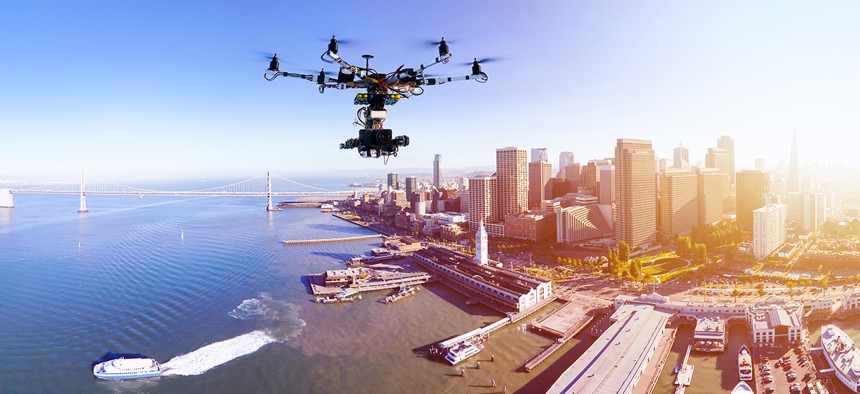A Drone Inspects a Bridge. Now What?

Alexey Yuzhakov/Shutterstock.com
The Federal Highway Agency needs visualization tools to make sense what's being collected by its unmanned inspectors.
Are drones better safety inspectors than humans? That's what a Transportation Department research project aims to find out.
DOT's Federal Highway Administration wants to investigate whether unmanned aerial systems should be used to assure the construction quality of bridges and to identify safety hazards. Drones can reach higher observation points easier than humans, and using them prevents humans from having to enter potentially dangerous situations.
Per its recent request for information, FHWA also wants industry's help harvesting and analyzing the data those drones might collect. Because the nation's transportation infrastructure is vast and distributed, DOT inspectors are “uniquely suited to benefit from the low-cost imaging and remote sensing provided by UAS."
» Get the best federal technology news and ideas delivered right to your inbox. Sign up here.
But setting up a network of drones and sensors is the easy part, the solicitation suggests. What's more challenging, and what requires more outside help, is being able to "efficiently process data (without extensive expertise), identify what really matters, fuse disparate data sources and develop visualization tools" that safety inspectors can act on.
The department wants to understand what level of quality the sensors and applications must be to ensure citizens' safety, the RFI said. For instance, do the drones need to be equipped with high-resolution cameras? Infrared thermography cameras? And what's the return on investment on this technology, both in terms of the increase in quality and amount of data it can collect compared to conventional systems, and the value of the information to bridge owners?
If worthwhile, DOT eventually would task a contractor with providing the staff, supplies, tools and supervision over the drone system.
Regulations surrounding drones are still evolving. The Federal Aviation Administration plans to establish a flight certification system that would allow drones to fly near airports, FAA Administrator Michael Huerta said at a Bloomberg event in Washington earlier this month. Currently, drones are only allowed to operate within the human line of sight and are prohibited from flying within 5 miles of airports unless they go through a waiver process.
NEXT STORY: A Few Helpful New Features in Windows 10





